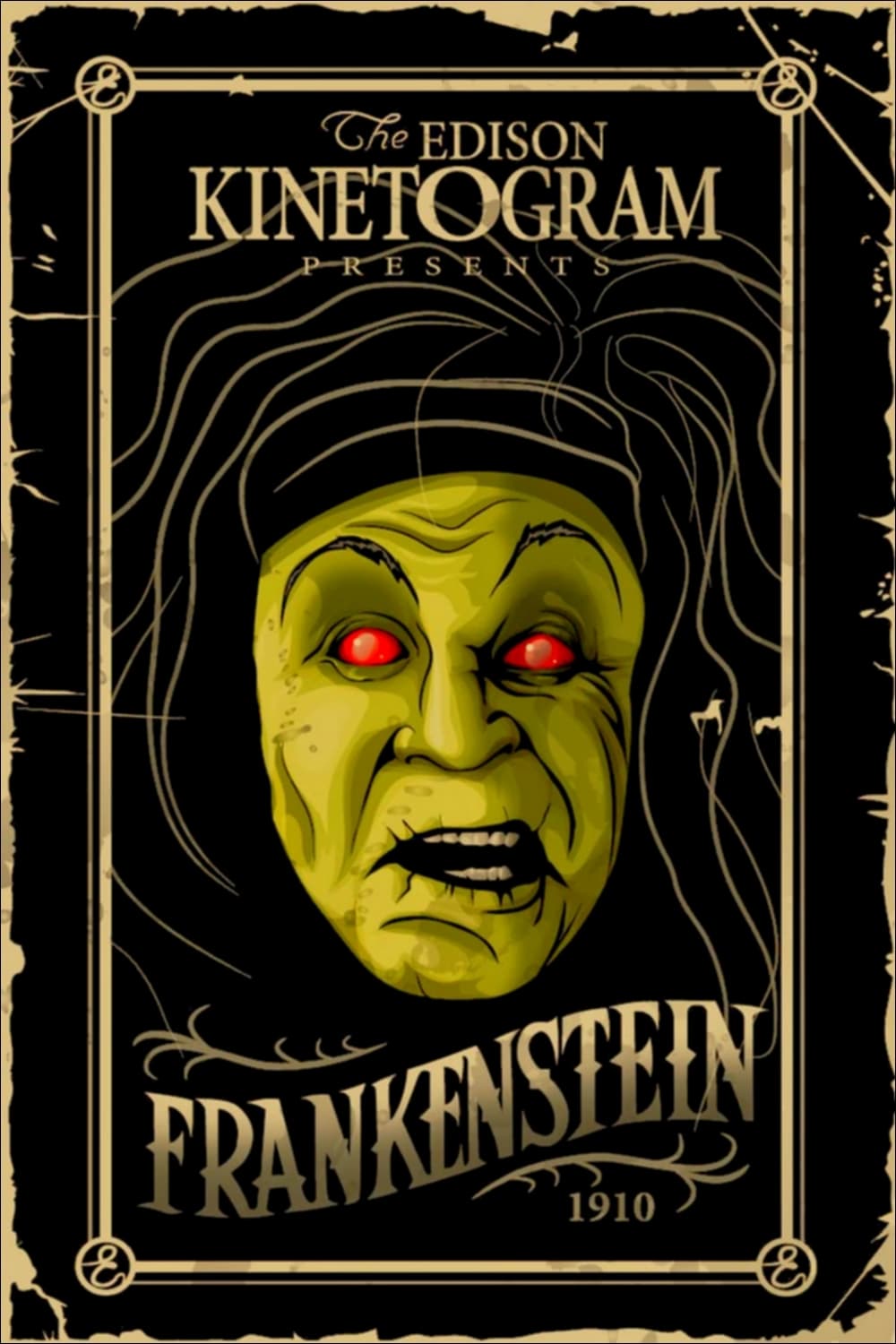
Frankenstein, a young medical student, trying to create the perfect human being, instead creates a misshapen monster. Made ill by what he has done, Frankenstein is comforted by his fiancée; but on his wedding night he is visited by the monster.
13 May Frankenstein (1910)
The Witch’s Looking-glass
I’m putting this on my list of films you must see. It is short and at first glance completely uninteresting.
But look again.
Here’s what happens: Young Frankenstein goes to college where he discovers the secret of life. Interesting that the filmmakers would think it cinematic to watch a man think and then have a eureka moment. The rest of the thing is highly cinematic (or so we would judge today) in all its choices, so this is the first remarkable event of the thing.
Then we get to see him create the creature. No lightning and dials here, instead a MacBethian cauldron in a sealed chamber. He peeks through a hole and as he does, we see the creature form. Its a remarkable effect for the time. I imagine it was done by playing backwards a film of a mannikin being dissolved by acid. Here’s the second interesting event.
You know, witchcraft wasn’t associated with cauldrons until MacBeth. And this opens up a whole world of possibilities of magic and film along the lines of the magic of Shakespeare. Unfortunately by the 30s this was all but extinguished by the association of magic (and science) with technological gismos that spark, have dials and gauges, the cauldron image relegated to bubbling flasks.
But then — after some business with the new wife which is a bit confusing if you don’t know the story — we have the bit with the mirror. This trick, friends is why I am directing you to this.
The existence of the mirror is introduced early and is linked to the image of the wife, who we see first as a reflection.
Then the mirror plays a role as the monster encounters himself and is appalled.
Then, later, the monster gets depressed (“overcome by love”) and decides to kill himself. He does so by standing in front of the mirror and willing himself out of existence. First, he disappears but his image in the mirror remains.
The scientist comes in and sees the monster in the mirror. Then after the monster‘s image acknowledges the scientist’s presence, it too disappears and is replaced by the normal reflection of the man.
Now, this requires a pretty sophisticated cinematic logic of about 100 years ago, and of a completely new medium. So radically new. The filmmaker clearly thought this would make sense to the viewer. Think about this a minute. Nowadays effects like this are automatic for most filmmakers because the vocabulary is so solidly settled.
But then (and with our best visionaries today) the filmmaker had to decide from scratch the cinematic notion to be used.
Here’s the folding notion: the relationship between the scientist and his monster is folded into the notion of us the viewers seeing images in a magical looking-glass. And further into the magical cauldron.
Wow. Who is being this clever today?
Posted in 2006
Ted’s Evaluation — 4 of 3: Every cineliterate person should experience this.


No Comments